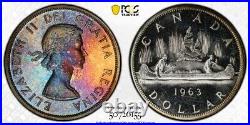
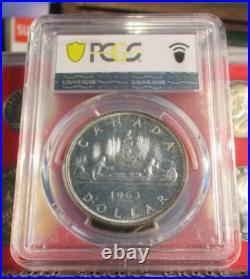
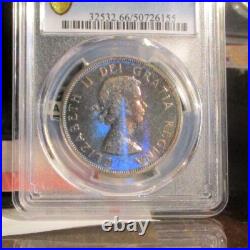
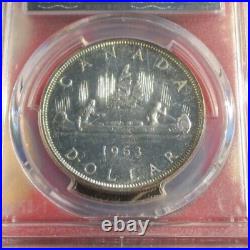
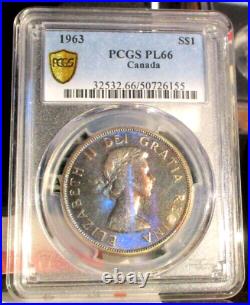

This coin has developed a tarnish that has evolved to a multi – colored reflectivity that is phenomenal. NO Colored Lights were used in the photos. The PGCS Tru-view photo is accurately shown. The incredible reflected colors range from Deep ultra-violet Blue through the rainbow to Orange – Red. Sulfides in the the atmosphere react with exposed silver producing commonly seen tarnish on the surface. When silver is exposed and a slow reaction occurs, and deepens in thickness with time, as explained. By the Canadian Govt….. Figure 2: As light hits the silver sulfide tarnish layer, some of it reflects off the top surface, and some of it passes through and then reflects off the underlying silver layer. These two different paths for the light result in light interference and produce different colors on the silver surface, depending on the thickness of the silver sulfide tarnish layer. When the light from the top and the bottom of the tarnish recombines, some of the colors are lost through interference. The color that remains depends on the thickness of the tarnish layer. In the early stages of tarnishing, as the thickness grows from 10 to 100 nano-meters (nm), the color changes from yellow through red-brown to blue. For thicknesses greater than about 100 nm, the colour is black, the true color of silver sulfide (Selwyn 2004). This is due to a phenomenon called thin film interference. As light hits the thin film of tarnish on the silver, it splits; some of it reflects off the top surface, and some of it reflects off the silver under the tarnish.
